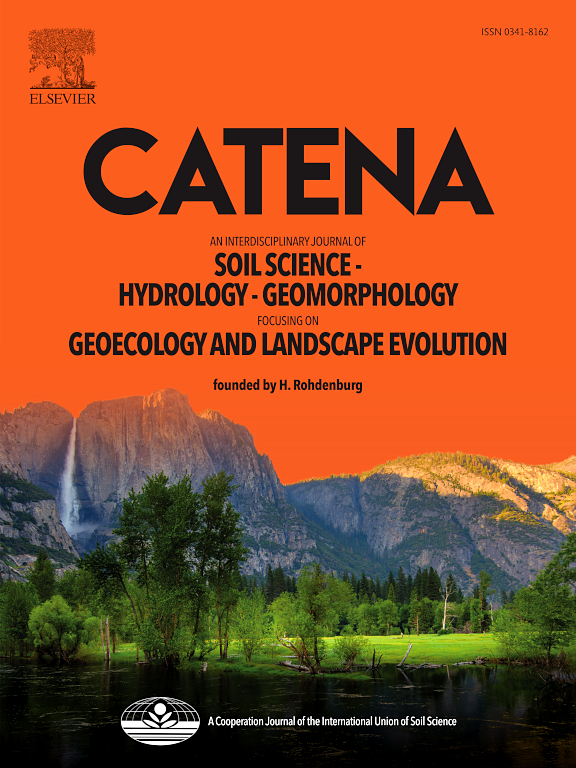How grasses stabilize soil organic carbon in aggregates of semi-arid ecologically restored land: Evidence from 13C natural abundance
IF 5.4
1区 农林科学
Q1 GEOSCIENCES, MULTIDISCIPLINARY
引用次数: 0
Abstract
Land restoration with grasses is suitable for boosting soil organic carbon (SOC) and biomass productivity. For developing better restoration policies to preserve or increase SOC stock and ecosystem function, a deeper knowledge on the impact of various grasses on SOC dynamics in restored land is required. Here, long-term SOC sequestration was assessed by investigating aggregate-associated carbon (C) and 13C natural abundance following land restoration with Cenchrus ciliaris, Panicum maximum, Chrysopogon fulvus, Heteropogon contortus, Sehima nervosum, and Vetiveria zizanioides grasses in semi-arid India. Among the grasses, C. ciliaris, H. contortus, and S. nervosum improved the proportion of large macroaggregates from 5 to 21 % at the surface and from 1.7 to 12.3 % in the subsurface layer, while the proportion of microaggregates declined significantly (P < 0.05). The higher δ13C values of small macroaggregates (SM) indicated greater C stabilization within the microaggregates under all grasses. The SM could protect ∼22–33 % and 8–15 % of total SOC in land restored with C. ciliaris, H. contortus, and S. nervosum at the surface and the subsurface soil, respectively. However, the roots of C. ciliaris, H. contortus, and S. nervosum contributed to ∼12.66–13.75 % and 2.22–11.24 % of SOC in those layers, respectively. The direction of C transfer was from macroaggregates to microaggregates in soils under C. cilirais, S. nervosum, and H. contortus. This C flow direction could explain greater SOC stabilization than other grasses. The greater amount of aggregate-protected C under these grasses was linked to their greater root biomass, density, and decay rate. In contrast, C transfer from microaggregates to macroaggregates under P. maximum, C. fulvus, and V. zizanioides could result in poor C stabilization. Thus, C. ciliaris, H. contortus, and S. nervosum could be potential options for SOC sequestration in semi-arid ecosystems.
求助全文
约1分钟内获得全文
求助全文
来源期刊

Catena
环境科学-地球科学综合
CiteScore
10.50
自引率
9.70%
发文量
816
审稿时长
54 days
期刊介绍:
Catena publishes papers describing original field and laboratory investigations and reviews on geoecology and landscape evolution with emphasis on interdisciplinary aspects of soil science, hydrology and geomorphology. It aims to disseminate new knowledge and foster better understanding of the physical environment, of evolutionary sequences that have resulted in past and current landscapes, and of the natural processes that are likely to determine the fate of our terrestrial environment.
Papers within any one of the above topics are welcome provided they are of sufficiently wide interest and relevance.
 求助内容:
求助内容: 应助结果提醒方式:
应助结果提醒方式:


